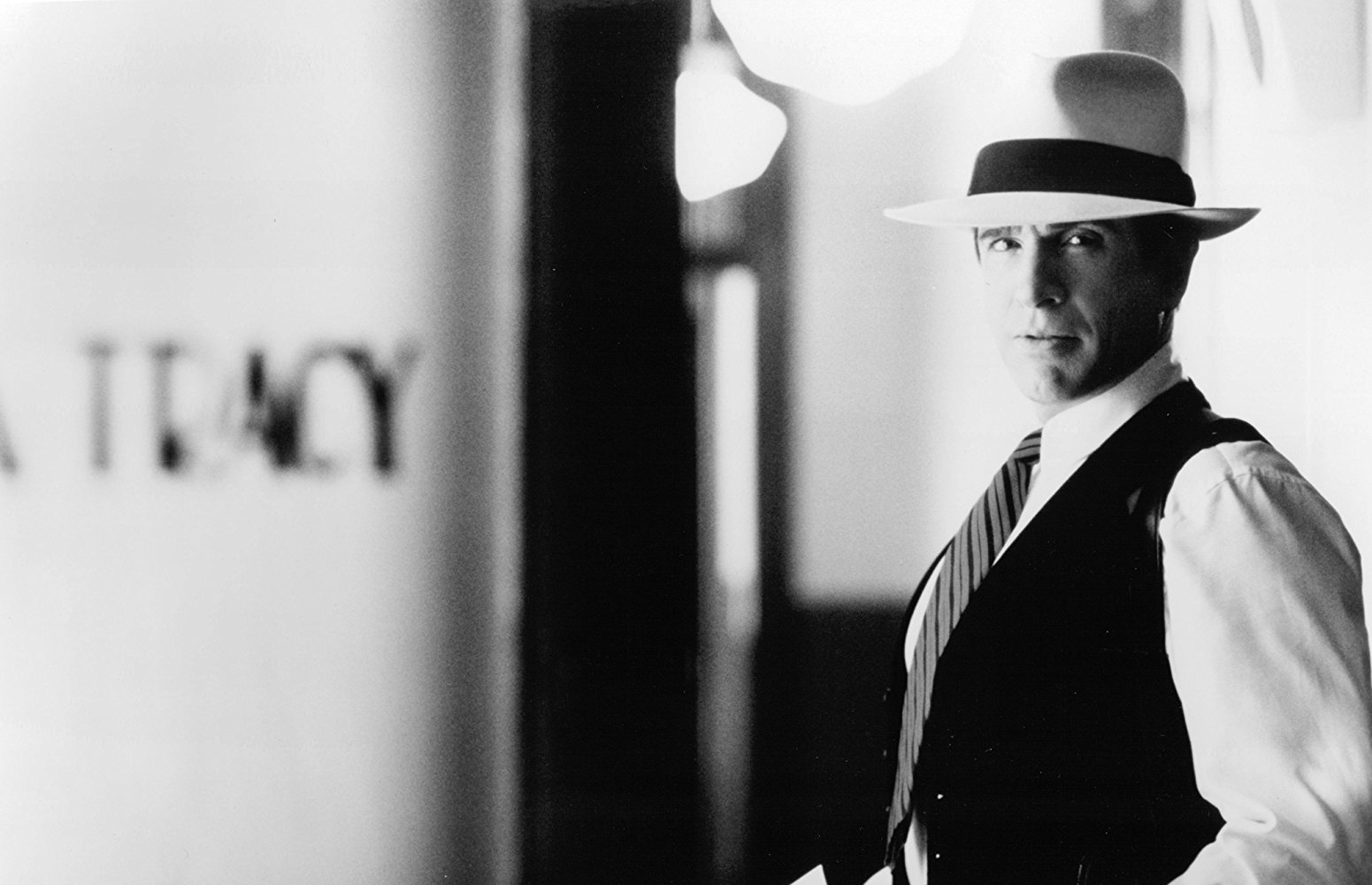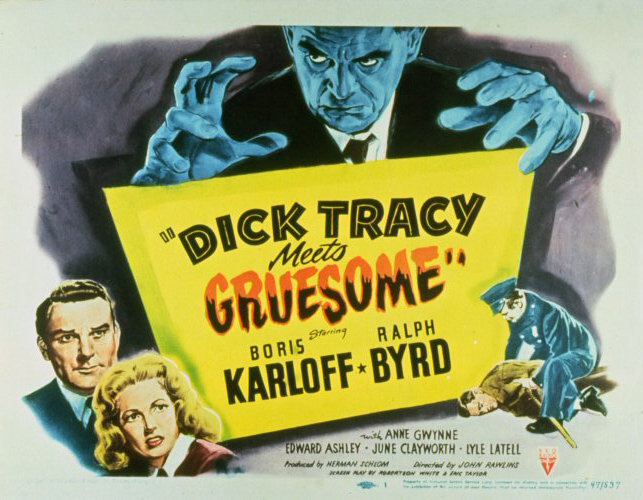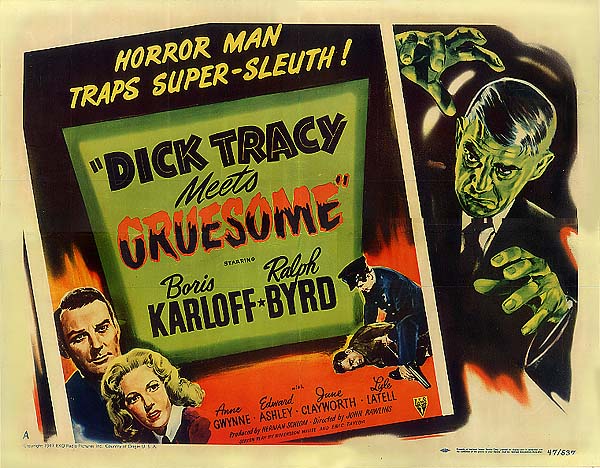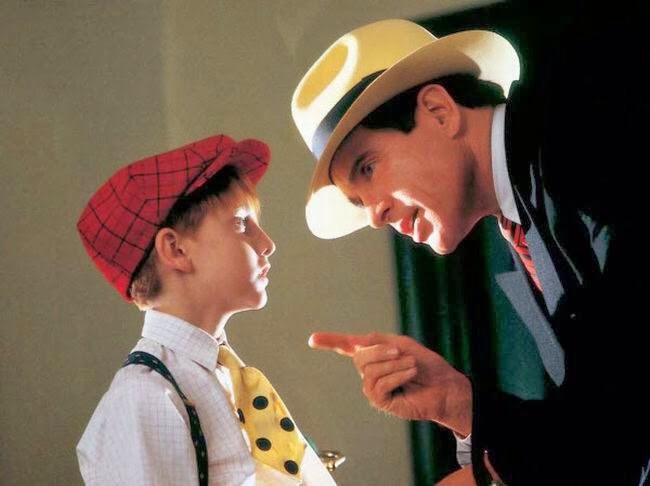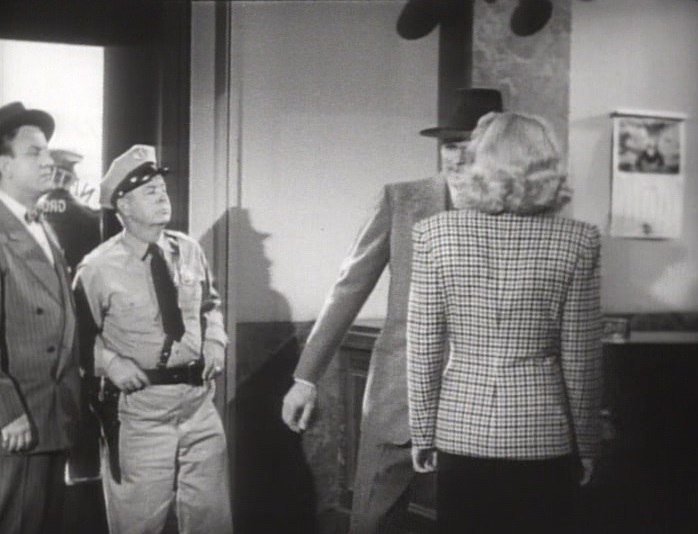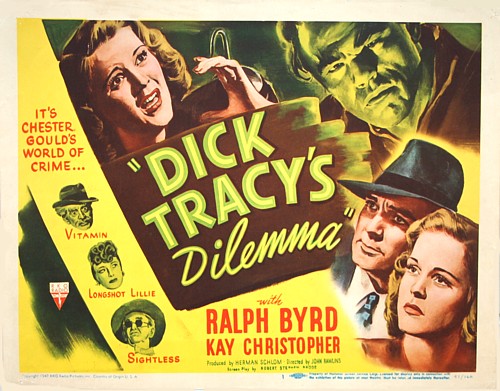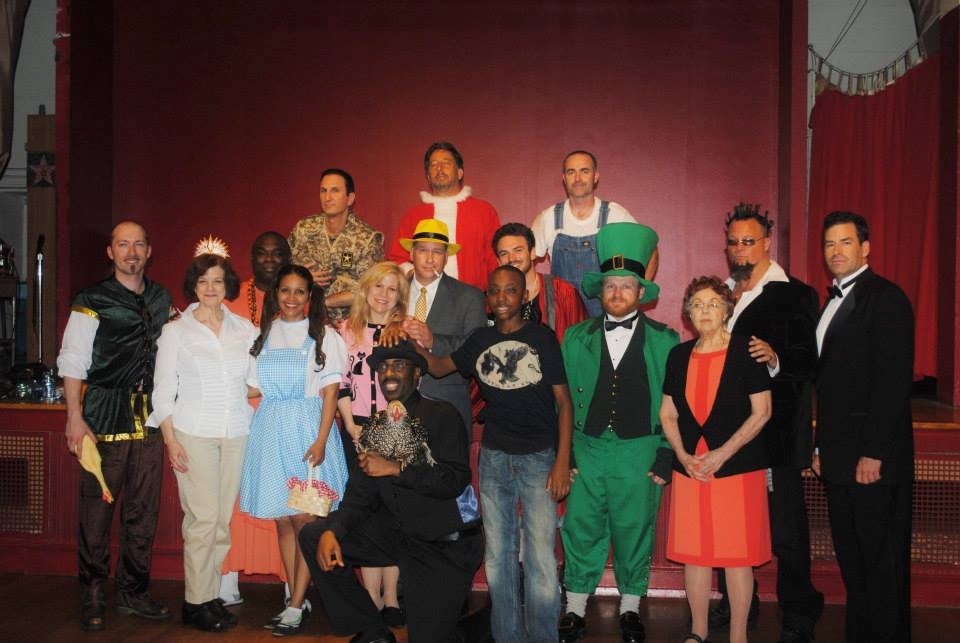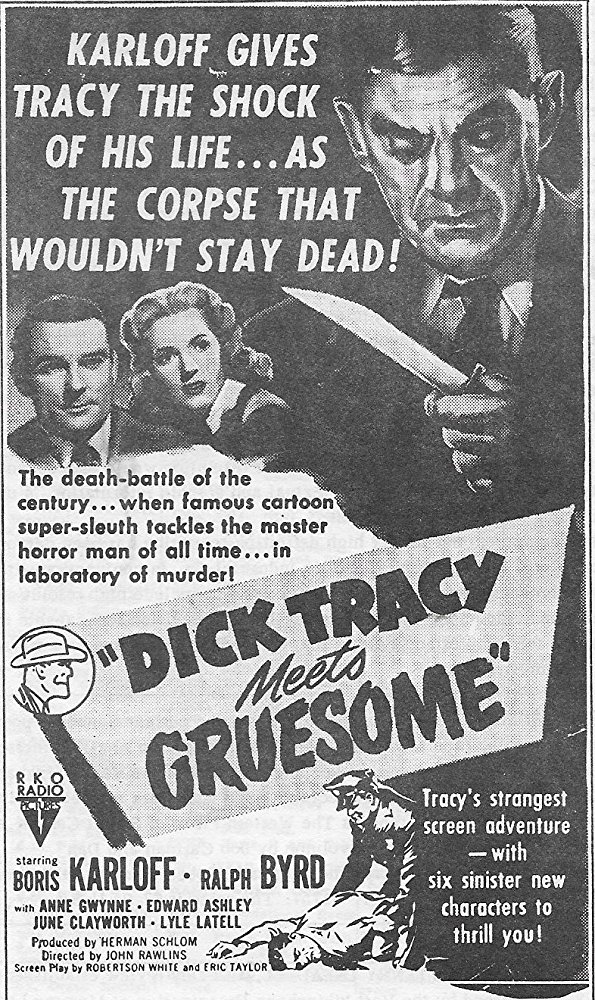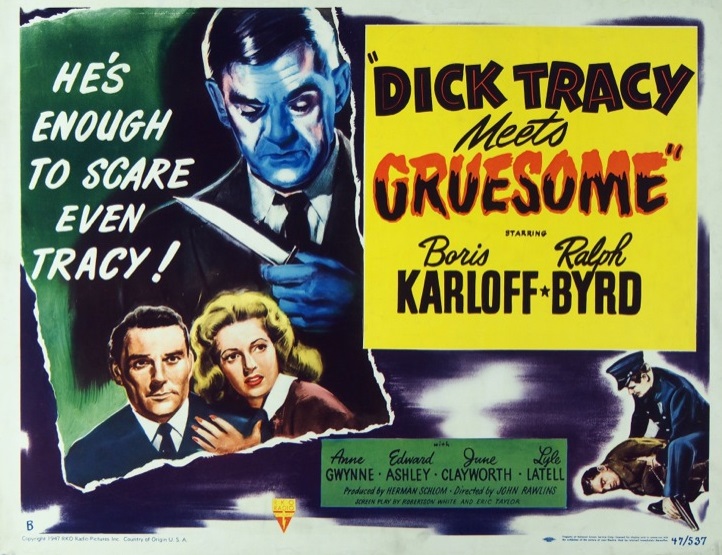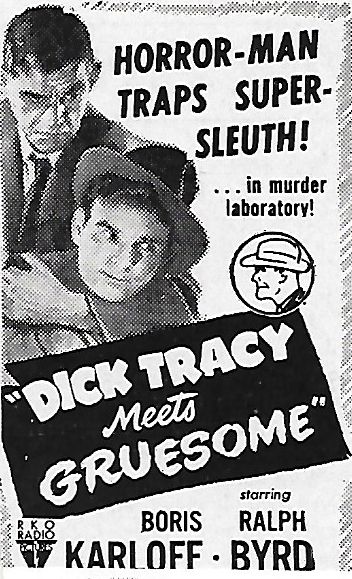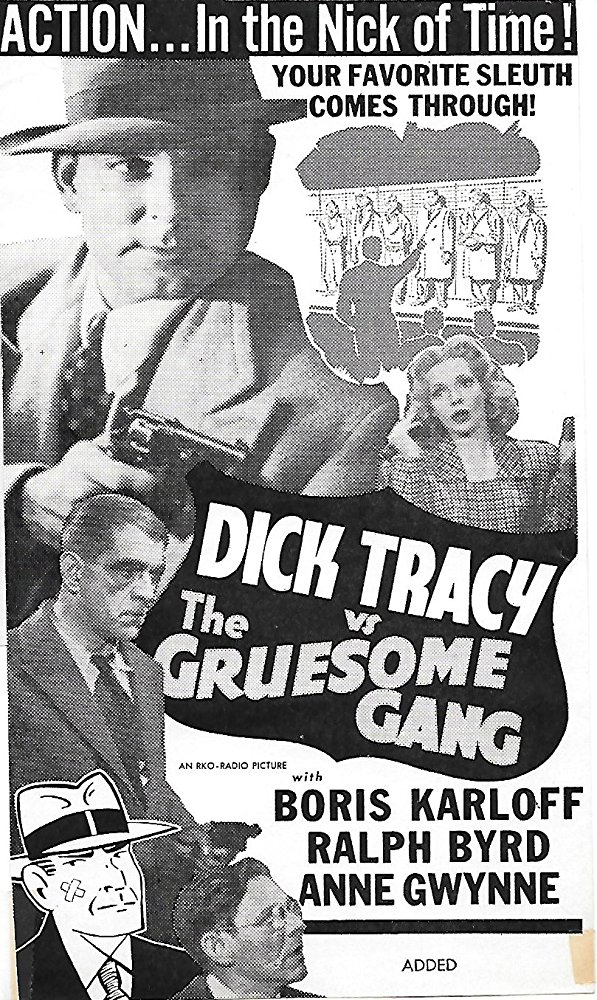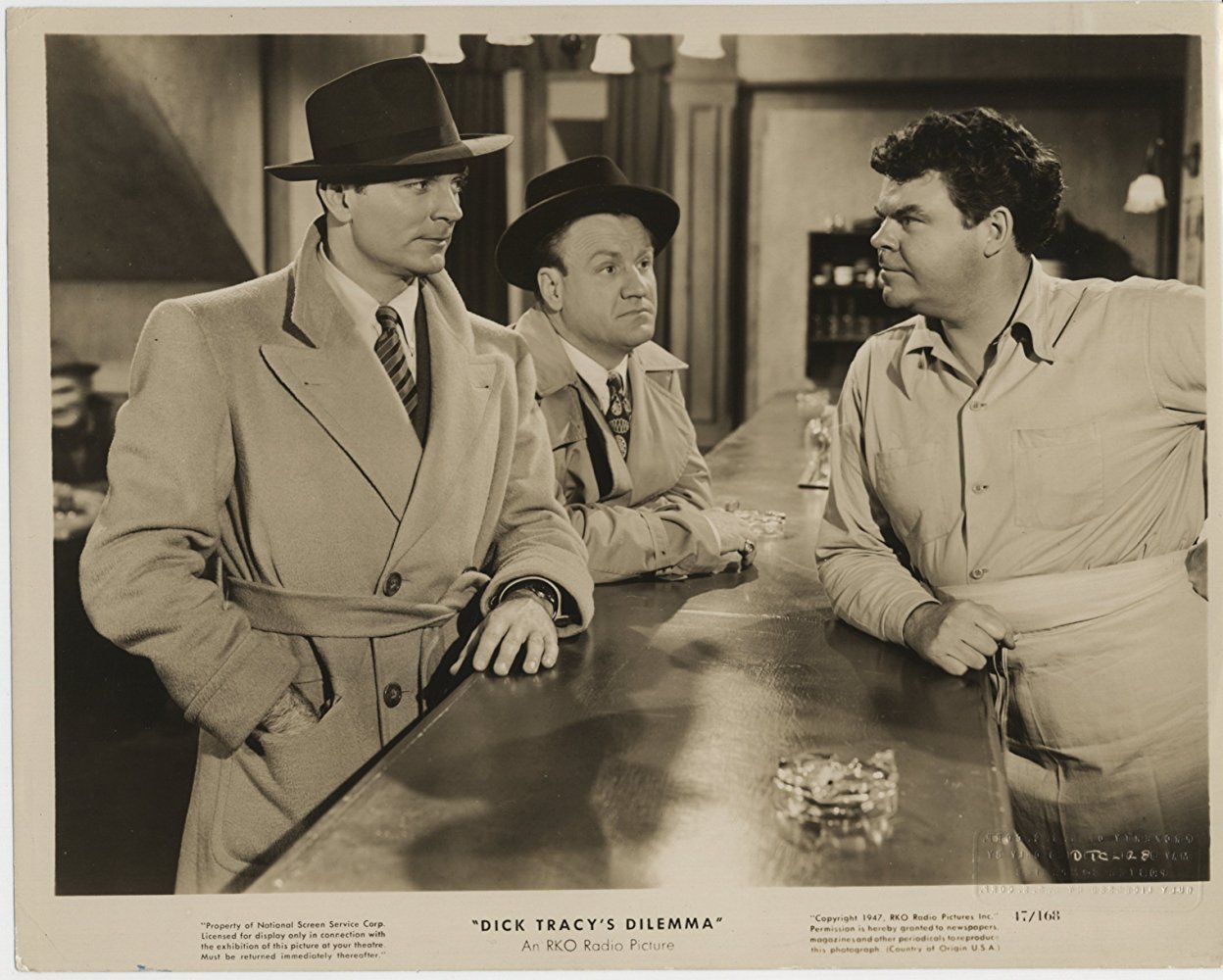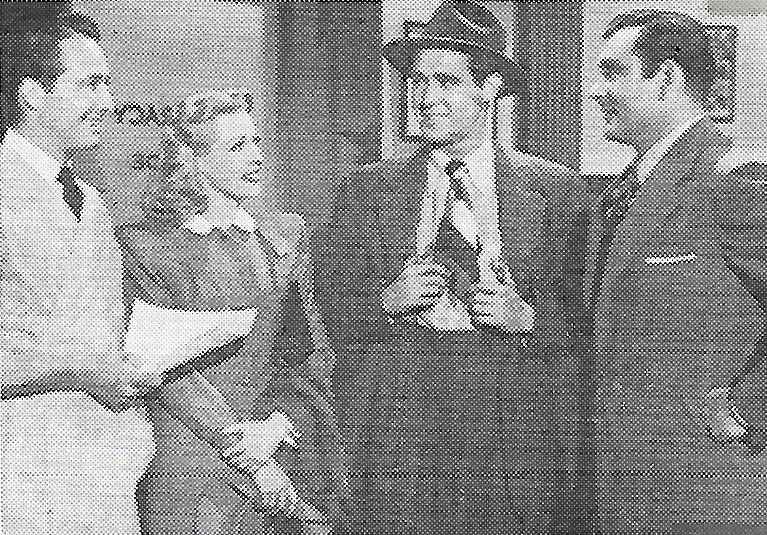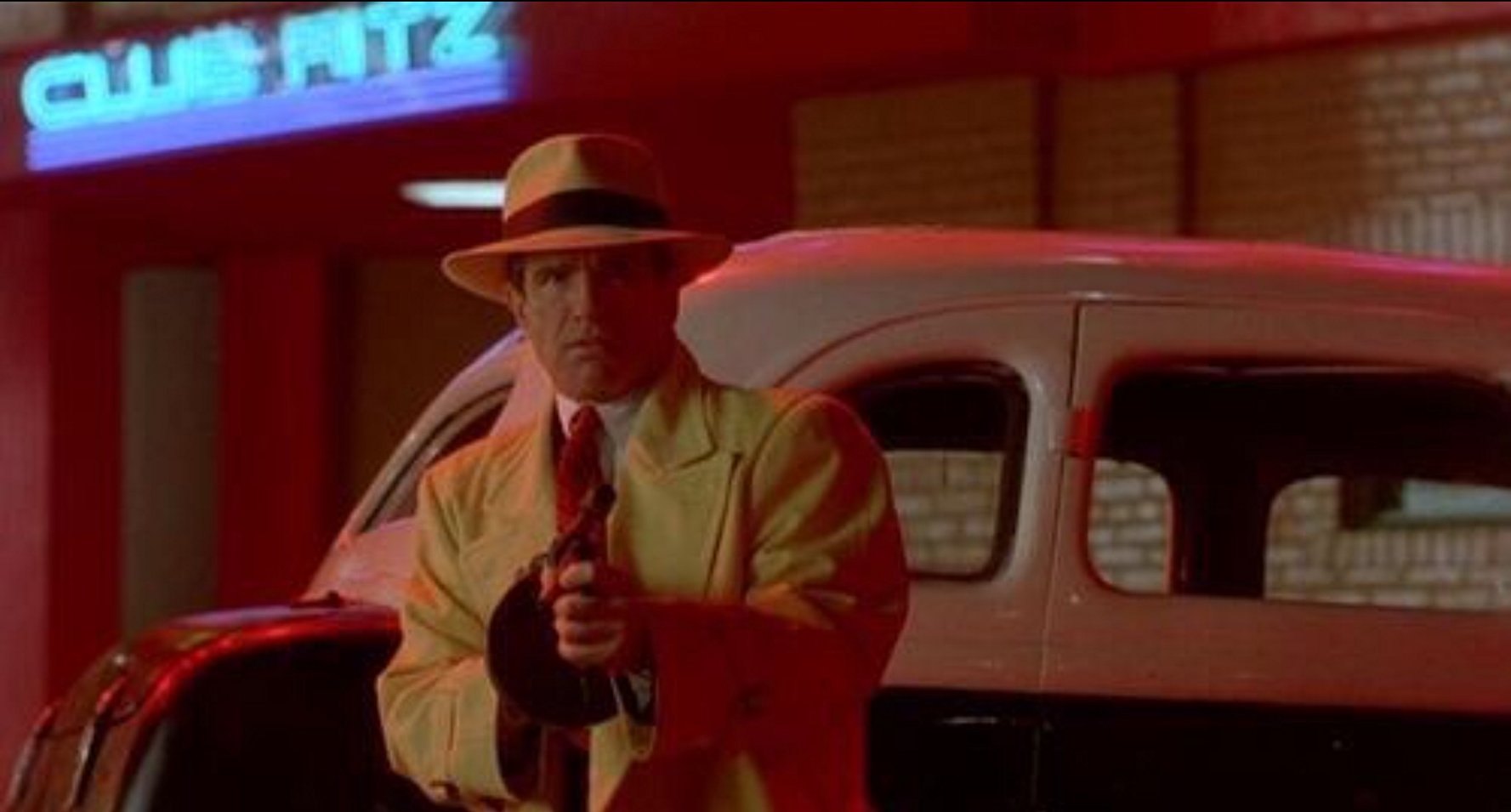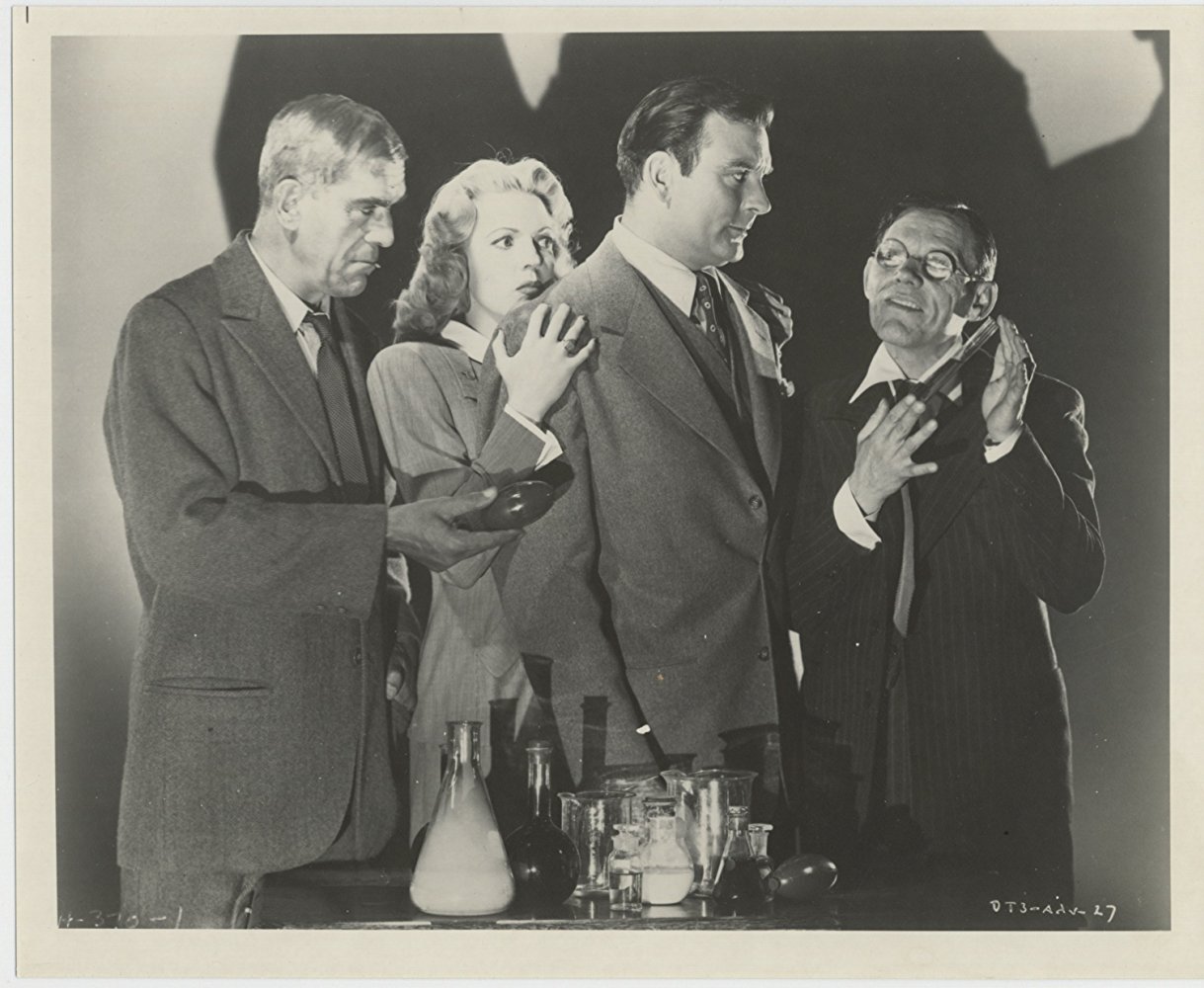Dick Tracy, one of the most famous comic book heroes ever, was created by Oklahoma-born comic artist Chester Gould. He made his debut in the Chicago Tribune on October 12th,1931.Gould had been trying to breakthrough into the comics with other stories for over three years but did not suceed until creating Dick Tracy.Fascinated by Chicago's Gang Wars, Gould based his comic strip detective on a combination of gangbuster Eliot Ness and literary slueth Sherlock Holmes. Tracy's first advarsary, Al Big Boy Caprice, was based upon Chicago's reigning ganglord Al Capone.In the comic strip that Gould submitted to the Tribune, the comic was entitled Plainclothes Tracy with the surname Tracy the only name the character was given. At the suggestion of the Tribune, Plainclothes was changed to Dick as a double-meaning name. Not only could it be the character's first name, but it also incorporated the street slang of referring to Police Detectives as Dicks .In the debut comic, Tracy is a recent college graduate planning to work in civil law as an attorney and notary public. He is already dating his sweetheart, Tess Trueheart and in the first story, Dick and Tess are having dinner at the home of her parents above the family store. It is then that Dick purposes to Tess with the blessing of her parents. Unbeknownst to the happy quartet, a pair of thieves who know that Old Man Trueheart keeps his life savings, $3,000 (Remember, this takes place during the Great Depression) hidden under a mattress in the home, are casing the apartment to rob it. As Dick and Tess and celebrating, the thieves break in and demand the money. When Mister Trueheart refuses, the thieves shoot him dead and knock Tracy unconscious when he tries to fight them. Before leaving with the money, the men kidnap Tess. When Tracy comes to, he's surrounded by police, including Chief James Brandon. Over the dead body of Old Man Trueheart, Tracy swears vengence and the Chief obliges him by making Tracy a detective. The story wraps up with Tracy rescuing Tess, killing the thugs, and discovering that the hoods were working for crime kingpin Big Boy Caprice. Tracy's personal obsession with capturing Big Boy wouldn't end until 1983 when the elderly crime boss died of a heart attack while trying to put out a $1,000,000 contract on Tracy's life.Although the marriage of Dick and Tess would be forstalled until Christmas Day, 1949 by Tracy's marriage to his job as a cop, the Tracy family continued to grow with the adoption of Junior Tracy, aka The Kid , in 1932. As portrayed in the 1990 movie, Tracy discovered the young orphan when he was a homeless pickpocket working for a bum named Steve the Tramp. Tracy rescued the boy from the brawling bum and took him as his own son. In 1951, two years after Dick and Tess married, Tess gave birth to a girl named Bonnie Braids, named so because she was born with growing blonde hair which a nurse braided into pigtails. Another son, named John, was born in 1979. Of the three children, Junior was the only one who followed his father's footsteps into police work. He used his gift for drawing to become a police sketch artist.Tracy's band of partners in the police department over the years began with his partnership with Pat Patton in 1931 in the city's Detectives' Bureau. When Chief Brandon retired in 1949, Patton became the new chief (Tracy turned down the position to remain on the front lines of police work) and Tracy became partners with Sam Catchem, (one of the earliest known characters of Jewish decent in comics) a former Boston Police Detective). In 1956, in repsonse to the increase of female police officers in the real world, Gould created a policewoman simply named Lizz . As for Tracy's rank within the police department, he began as a detective but by the 1940's, he officially became the Chief of Detectives and eventually it was established that Tracy commanded the Major Crimes Unit (Modeled after the actual MCU in the Chicago Police Department). Tracy has also doubled as an FBI agent, often working with a recurring character named Jim Trailer. During World War II, Tracy also worked for Naval Intelligence fighting spies and saboteurs such as Black Pearl, Pruneface, and The Brow.Initially, the comic's rogues gallery of criminals were based upon real life gangsters such as John Dillinger, Dutch Schultz, Machine Gun Kelly, Baby Face Nelson, and Pretty Boy Floyd. But by the 1940's, Gould began to create a remarkable gallery of grotesques, criminals whose bizarre looks reflected their evil. Amongst the first was The Mole in 1940 who ran an underground hideout for fugitives. Others have included Flattop (a flat-headed contract killer for the mob), Itchy (a killer and extortionist who was constantly scratching himself), Mumbles (a mush-mouthed con-man), Influence (an extortionist who used hypnotism on his victims). B-B Eyes (a beady eye racketeer), Breathless Mahoney (a blackmailer with a Veronica Lake hair-do), and Little Face Finney (a jewel thief with a normal sized head and a face the size of a normal nose), 88 Keys (a piano-playing con man), and The Blank (a masked criminal seeking revenge against his former gang). Many of these villians were represented in the hit 1990 movie.One of the comic's halmarks has been it's attempt to display the use of real police tactics and devices such as ballistics, lab analysis, and surveillance to defeat criminals. Also, unlike most of the comic book heroes, Dick Tracy does not rely on a core group of recurring super-villians to fight over and over again. In keeping with reality, many of the strip's famous baddies usually only make one appearance. They either end up: A) Getting shot in a gun battle with Tracy. B) Die some ironic death like when The Brow, a Nazi saboteur, fell to his death impaled by an American Flagpole behind a World War One memorial. C) Are captured and conviced of crimes that either means Life in prison or the Death Penalty. Rarely does a villian come back. One of the few instances is when Mumbles, who was thought to have drowned at sea in 1947, comes back in 1956, having been rescued and trying to lay low while he seeks revenge against Tracy. However, there have been several instances when Tracy's fought with relatives of slain advasaries. In 1946, while Tracy was chasing Itchy, he was taken prisoner by Itchy who used the home of B-B Eyes widow as a hideout. In the 1950s Flattop's short-fused brother, Blowtop appeared. In 1956, Flattop Junior was killed by Lizz after he went insane over seeing the ghost of a young woman he'd murdered. And in the 1970s Flattop's daughter, Angeltop, teamed with Brow Junior to seek revenge and The Mole's daughter also appeared, teaming with a villian called Scorpio (no relation to the real life Zodiac serial killer).At the end of 1977, Gould retired from the strip and Rick Fletcher (artist) and Max Allan Collins (writer) took over full-time duties on the series. Fletcher had been Gould's art assistant. Their first storyline introduced Angeltop. A few years later, after Fletcher passed away, Dick Locher took over as artist.One storyline in the post-Gould era was to write out the Moon people introduced in the 1960s. Starting in 1962, with the introduction of industrialist Diet Smith's space coupe, the strip ramped up its science fiction element. The magnetic-powered space couple led to the ability to go to the Moon, where Moon Maid and a race of moon people were discovered. Gould had de-emphasized all this in the 1970s. But Collins devised a storyline where a dying Big Boy puts out a contract on Tracy. Moon Maid, by this time married to Junior, is killed by that car bomb in much the same manner as Don Michael Corleone's first wife in Sicily. The Moon people break off diplomatic relations with the Earth.Collins left the series in the 1990s to work on his mystery novels full-time. Locher contines to oversee the series which has seen Dick Tracy, who began as a 1930's gangbuster, fight International Terrorism and Internet crimes in the present day.
Show less «

